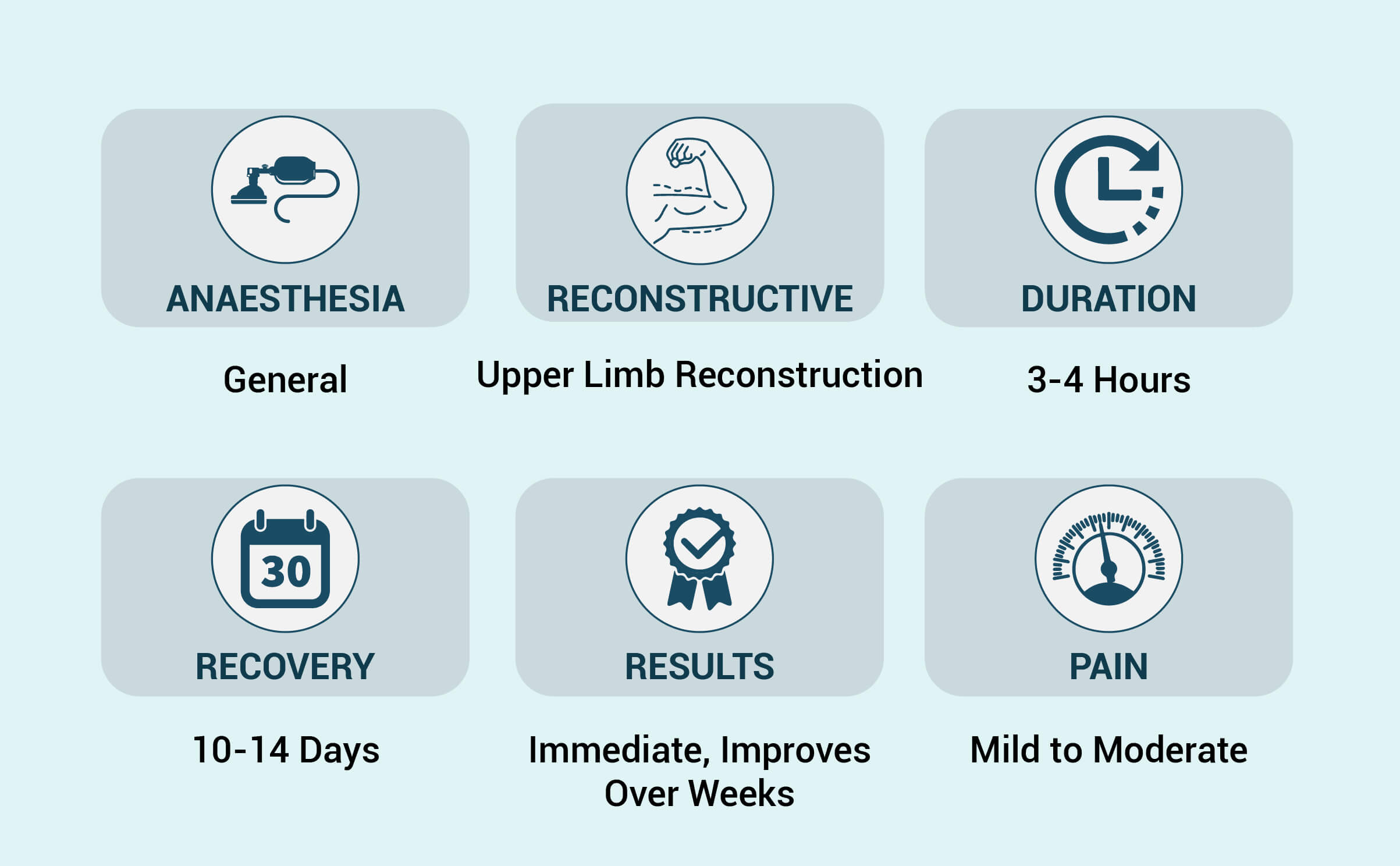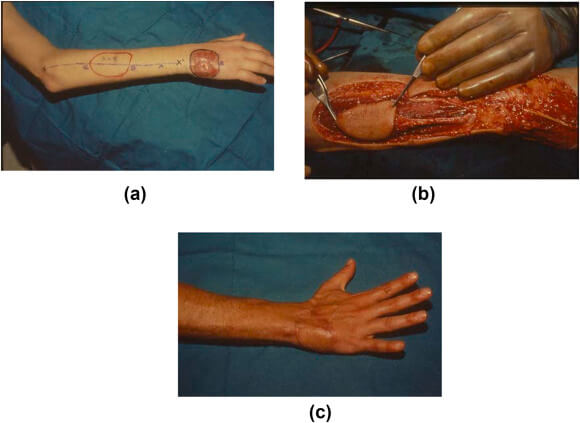Upperlimb Reconstruction Surgery Doctor in Mumbai
Reconstructive surgery is a procedure wherein injured areas or defects are corrected by using flaps of tissue, skin, bone or metalwork, along with underlying blood vessels or muscle to rebuild the damaged tissues. Reconstructive surgery on the upper and lower limbs is performed to improve the structural, functional and cosmetic outcomes of injured limbs. The upper limb includes all the structures from the fingertips to the neck along with the nerves that control the arms

Procedure
Reconstruction to the upper limb may involve any of the following:

Local flap reconstruction:This involves the use of the ‘next best ’ being the next best skmobilized can be mobilised from adjacent tissue as pivot, advancement or interpolation flaps.
Regional flap reconstruction:Reliable tissue can be transferred based on the vascular pedicles of the upper limb. This tissue is used to resurface areas of tissue loss.
Distant flap reconstruction:Areas adjacent to the upper limb can be used to resurface larger defects in the upper limb. Such areas include the groin, abdomen and chest. These techniques may involve two staged operations.
Free flap reconstruction:More complex defects require the use of free tissue transfer. This is where a reliable block of tissue is moved from one area to another and its blood supply is restored using microsurgical techniques.
Revascularisation and replantation:Microsurgical reconstruction is used to restore a blood supply to a region when it has been divided (e.g. severed digit), or to restore blood flow when interrupted by trauma (e.g. crush injury).
 WhatsApp
WhatsApp